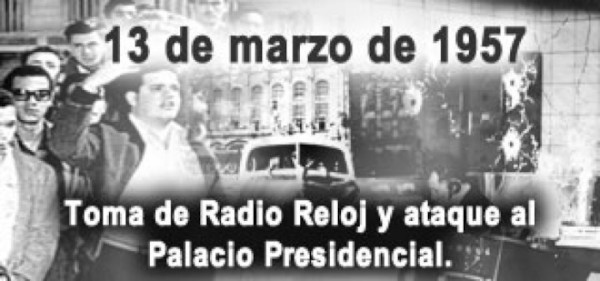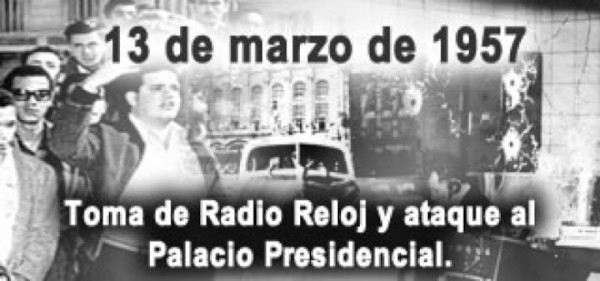March 13, 1957 is registered in the history of Cuba as a glorious date, in spite of the fact that the historical event that marked that day was not as successful as expected by its protagonists and the student leader Jose Antonio Echeverria was assassinated.
That day a commando of the Revolutionary Directorate, the armed wing of the University Student Federation (FEU), stormed the Presidential Palace and briefly occupied the capital’s Radio Reloj radio station, which by then had a large national audience.
An important objective in bursting into the seat of the usurper government, occupied since March 10, 1952 by the coup plotter and murderer Fulgencio Batista, was to execute the tyrant, a man who daily plunged Cuba into pain with criminal and torturing cruelty.
But the conception was more comprehensive and far-reaching in relation to its aims, since it also aspired to generate popular insurrection initiated from the delivery of weapons to the people, to turn it into a boomerang or revolutionary tide of great force, capable of putting an end to the regime that surrendered the country’s wealth.
The secret plan was to continue, if the first part was fulfilled, to the University of Havana and from there to take a cache of weapons prepared for the occasion and deliver them to the population, who were to learn the news of the dictator’s death through a speech made by the enraged president of the FEU from the national radio station.
When he was able to enter the radio station, Jose Antonio did not know that the carefully planned action of



